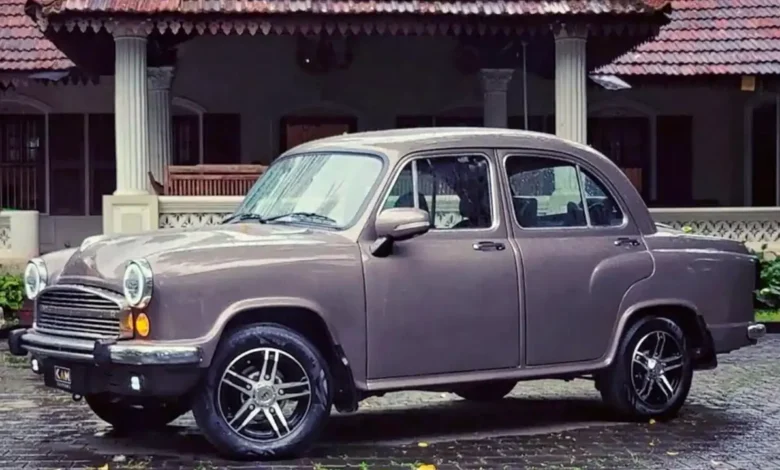
For many years, the Ambassador was the primary vehicle that shaped the unique image of the Indian automobile industry. This vehicle represented Indian society, culture, and industrial development more than it did merely serve as a means of transportation. The Ambassador, which was produced by Hindustan Motors, was India’s top car and a pivotal point in the development of the auto industry there. Examining the history, cultural relevance, and economic contributions of the Ambassador car is necessary to fully comprehend its influence and importance in India. These factors together solidify the car’s status as one of the most significant automobiles in Indian history.
A Brief History of the Ambassador Car
The Morris Oxford Series III, a British vehicle that served as the Ambassador’s model, is where the car’s roots may be found. Hindustan Motors purchased the rights to produce this car in India in 1957. With this choice, the Ambassador’s career in the Indian auto industry began, and the vehicle quickly came to be associated with Indian roadways.
India was still in the early phases of industrialisation in the 1950s and 1960s. The economic policies of the nation prioritised import substitution while maintaining a strong focus on self-reliance. The government supported homegrown businesses, and the auto industry was no different. The Ambassador, which was produced fully in India, came to represent the country’s budding automotive sector and its aim to lessen its reliance on imports.
The Role of the Ambassador in Indian Society
The Ambassador was more than just a vehicle; it was a symbol of culture. Politicians, bureaucrats, and government employees preferred to travel in the Ambassador during the 1960s, 1970s, and even 1980s. It became a regular sight around the nation as a symbol of authority and power, appearing in official convoys and at political gatherings. The car’s strong, durable architecture made it a sensible option for long-distance driving and intercity commuting because Indian roads were frequently uneven and badly maintained.
Moreover, the Ambassador was the preferred car for the developing middle class in India. Possessing an Ambassador was a status symbol and a sign of economic success and upward mobility for many families. Its roomy cabin made it the ideal family vehicle, and inexpensive maintenance was made possible by its comparatively straightforward mechanics. The Ambassador’s broad acceptance throughout Indian society was a reflection of the vehicle’s profound cultural importance.
Economic Contributions and Industrial Development
The Ambassador had a significant economic impact on India and was more than just a cultural phenomenon. The Ambassador, produced by Hindustan Motors, contributed to laying the groundwork for India’s car industry. When the nation’s industrial base was still growing, the production of the car boosted employment and the economy in areas like West Bengal, home to Hindustan Motors.
Furthermore, the Ambassador’s design was specifically tailored to Indian conditions, which gave it a long-term competitive advantage in the home market. It was designed to be strong and resilient, able to survive the harsh conditions and roads of India. Because of its longevity, the car had a lengthy lifespan, which added to its appeal to Indian buyers. It became a ubiquitous emblem of transportation in India because to its prevalence on the nation’s roadways, which ranged from government fleets to private owners and taxi drivers.
Additionally, the automobile was crucial in advancing the domestic auto component market in India. Since the Ambassador was made in the country, it was dependent on local vendors for parts and components. This lessened the need for imported parts and contributed to the development of a robust domestic supply chain network, which in turn encouraged the expansion of small and medium-sized businesses that served the automobile industry.
The Ambassador’s Legacy in the Indian Market
The Ambassador’s unmatched position in the Indian market for more than 40 years is evidence of its dependability and popularity. However, the Indian car industry started to experience major changes in the late 1990s and early 2000s. Early 1990s liberalisation laws made it possible for foreign automakers to enter the Indian market, bringing with them cutting-edge styles, cutting-edge technology, and competitive prices. Fast gaining popularity were companies like Maruti Suzuki, Hyundai, and Honda; they offered stylish, technologically advanced, and fuel-efficient cars that started to appeal to the aspirational middle class in India.
For a while, the Ambassador was nevertheless well-liked despite these modifications, especially by government organisations and cab companies. Its roomy cabin and sturdy construction kept it popular for heavy-duty and long-distance driving. But in the end, the car’s outmoded styling, dearth of contemporary amenities, and poorer fuel economy contributed to its decrease in appeal.
The Ambassador’s output had drastically decreased by the 2010s. With the formal cessation of production in 2014, Hindustan Motors brought an era to an end. In spite of this, the Ambassador’s legacy lives on. The automobile is still viewed with affection as a representation of India’s post-independence industrial development and as a generational cultural icon that profoundly impacted the country’s automotive heritage.
Why the Ambassador Still Matters Today
The story of the Ambassador is not just about a car; it is about India’s journey toward modernization and self-reliance. It represents the aspirations of a newly independent nation striving to build its industries and create jobs for its people. The Ambassador car was, for many Indians, their first car, and it holds a special place in the collective memory of the nation.
Moreover, the Ambassador’s legacy serves as a reminder of the importance of adapting to changing market conditions. While the car was immensely popular for many years, its failure to innovate and keep up with modern trends ultimately led to its decline. This offers valuable lessons for the Indian automobile industry, which must continue to innovate and adapt in an increasingly competitive global market.
In conclusion, the Ambassador car holds a unique place in the history of the Indian automobile industry. It was more than just a vehicle; it was a cultural icon, a symbol of industrial growth, and a contributor to the country’s economic development. Its legacy endures, reminding us of a time when India was forging its path toward self-reliance and modernization. Today, the Ambassador remains an important chapter in India’s automotive history, a testament to the power of homegrown innovation and industrial ambition.
